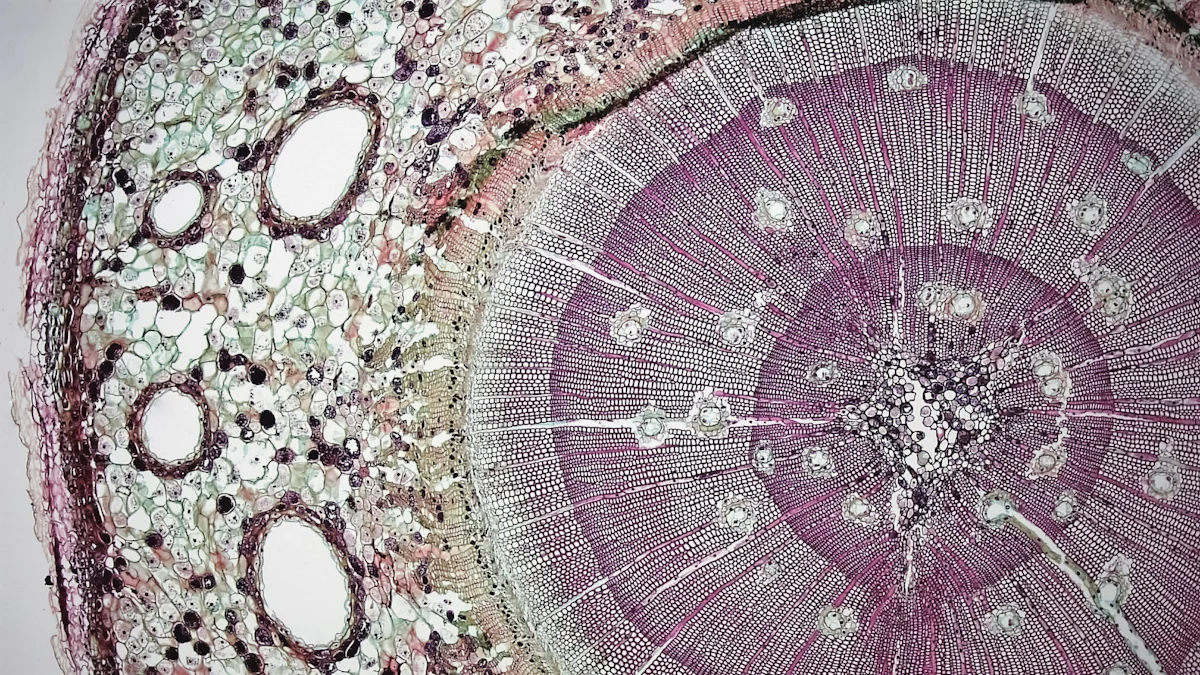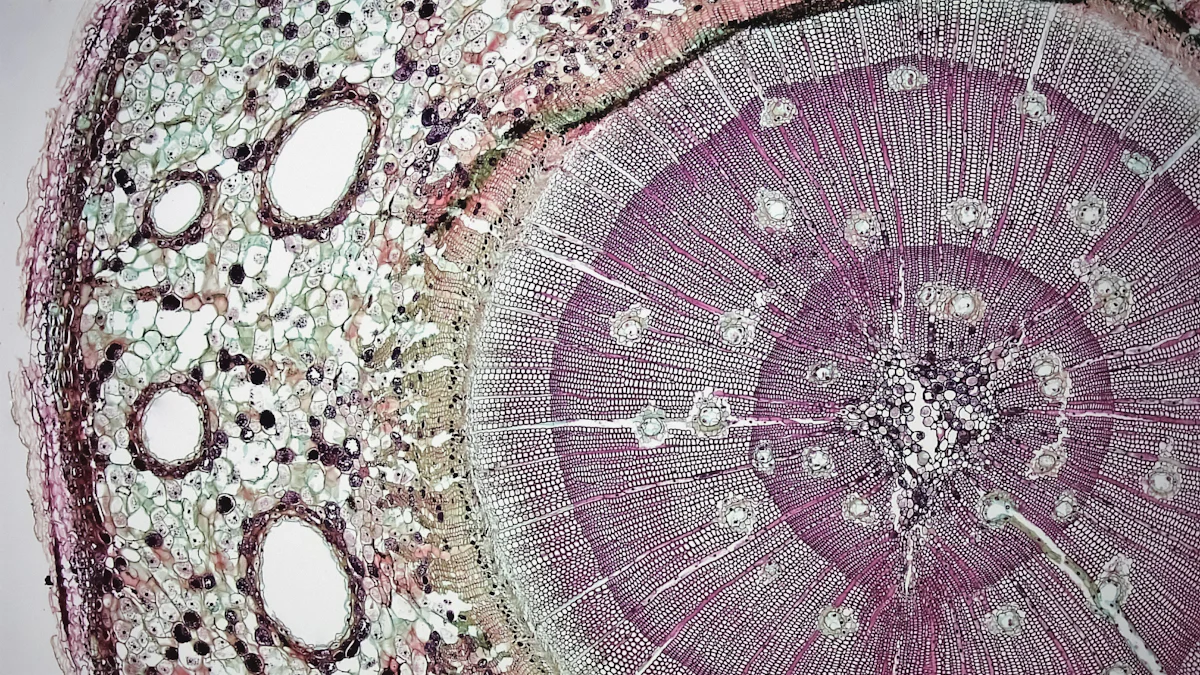Histology of Kidney Explained Simply

The kidneys are important for keeping our body balanced. They clean waste, control blood pressure, and keep electrolytes balanced. Learning about the Histology of Kidney shows how these work on a tiny level. Histology shows the detailed parts inside the kidney, like the renal corpuscle and nephron. These parts are key for kidney work. For example, if the renal artery gets narrow, it can cause high blood pressure and kidney problems if not fixed. Studying kidney histology helps us understand these issues and their effects on health.
Overview of Kidney Structure
Renal Cortex
Composition and Function
The renal cortex is interesting. It is the kidney’s outer layer. It filters blood. The cortex has many nephrons. Nephrons are the kidney’s working parts. They remove waste from blood. They also take out extra stuff. The renal cortex keeps body fluids balanced too. It reabsorbs needed nutrients and water.
Key Cellular Components
The renal cortex has important cell parts. Glomeruli are small capillary networks here. They filter blood well. Proximal tubules take back nutrients and water into blood. Distal tubules adjust urine by adding or taking away ions and water. These cells help kidneys work right.
Renal Medulla
Structure and Role
The medulla is under the cortex with pyramid shapes called renal pyramids. The medulla helps make urine stronger by saving water using loops and ducts inside it.
Differences from Renal Cortex
The medulla looks different from the cortex in shape and job. The cortex looks grainy with lots of nephrons, but the medulla has stripes due to loops and ducts lined up straightly inside it for concentrating urine, while the cortex focuses on filtering and reabsorbing.
The Nephron: Kidney’s Work Unit
Renal Corpuscle
Bowman’s Capsule
Bowman’s Capsule is like a cup. It holds the glomerulus. It catches stuff from blood. Its walls are thin, letting water and small things pass. It’s where urine starts forming. It helps filter blood well.
Glomerulus and Filtration
The glomerulus is tiny blood vessels. It filters blood under pressure. Water and solutes go into Bowman’s Capsule. It’s like a sieve, keeping big molecules in blood. This keeps body balanced.
Proximal Convoluted Tubule
Structure and Function
The proximal convoluted tubule twists a lot. This helps it absorb nutrients back to the blood. It’s like a busy road for important stuff to return. Its walls have microvilli to help absorb better.
Role in Reabsorption
Reabsorption here is great. It takes glucose, amino acids, and ions back from filtrate. This saves important nutrients. It also reabsorbs water to keep fluids balanced.
Loop of Henle
Descending and Ascending Limbs
Loop of Henle has two parts: descending lets water out, concentrating filtrate; ascending lets salts out but keeps water in.
Importance in Concentration Gradient
This gradient helps make concentrated urine, saving water and preventing dehydration by keeping needed fluids.
Distal Convoluted Tubule
Job in Secretion and Reabsorption
The distal convoluted tubule (DCT) is very interesting. It helps make urine just right. Here, the kidney changes sodium, potassium, and calcium levels. The DCT puts ions and waste into the filtrate. This keeps the body’s electrolytes balanced. It also takes back water and sodium to help control blood pressure.
Link to Collecting Duct
The DCT joins with the collecting duct. This link is key for final urine concentration. As filtrate enters the collecting duct, it gets more processed. The collecting duct saves more water when needed by the body. This makes sure urine has the right mix of waste and water when it leaves the body. The smooth move from DCT to collecting duct shows how well kidneys keep balance.
Glomerulus and How It Filters Blood
Filtration Barrier
The kidney’s filter is very important. It helps clean blood. This filter keeps our body balanced.
Endothelial Cells
These cells line the glomerulus blood vessels. They have tiny holes called fenestrations. Water and small stuff pass through these holes. Big things like proteins stay in the blood. This filtering keeps our body’s balance right.
Podocytes and Their Slits
Podocytes are special cells around glomerulus capillaries. They have long extensions making slits for filtering. These slits let only right things into Bowman’s capsule. Together with endothelial cells, they make a strong filter.
Filtration Speed and Control
The speed of kidney filtering is called GFR (glomerular filtration rate). Knowing how this works shows us how kidneys keep balance.
What Changes Filtration?
Many things change how fast kidneys filter. More blood flow means more filtering happens. Bigger slits let more stuff through. If the barrier gets hurt, it filters less well.
Blood Pressure’s Role
Blood pressure affects filtration speed a lot. High pressure pushes more blood to filter faster but can harm the barrier if too high. Low pressure slows down filtering, causing waste to build up in the body. Kidneys help control pressure to keep everything balanced.
Learning about glomerulus and its work helps us see how kidneys keep us healthy by removing waste and balancing fluids and electrolytes.
Juxtaglomerular Apparatus
The juxtaglomerular apparatus is key for kidney work. It helps control blood pressure and keeps kidneys working well. Knowing its parts shows how our bodies stay balanced.
Structure and Components
This apparatus has important parts that help the kidneys.
Macula Densa
Macula densa cells are in the distal tubule. They check salt levels in the fluid. If salt changes, they send signals to adjust blood pressure and fluids.
Juxtaglomerular Cells
These cells are near small arteries. They make renin, which controls blood pressure. When low salt is found, they release renin to keep pressure steady.
Role in Blood Pressure Regulation
This apparatus helps manage blood pressure using different ways.
Renin-Angiotensin System
Renin changes a protein into angiotensin I, then II. Angiotensin II tightens vessels, raising pressure. It also makes kidneys hold onto salt and water.
Feedback Mechanisms
Feedback helps this system react right to changes. High pressure means less renin; low means more renin. This keeps things balanced inside us.
Learning about this system shows how kidneys keep us healthy by balancing everything just right.
Blood Supply to the Kidney
Knowing how blood gets to kidneys shows us their job. Kidneys need steady blood flow to clean waste and balance body fluids.
Renal Arteries and Veins
Pathway of Blood Flow
Blood goes into kidneys through renal arteries. These come from the aorta, the main artery. They bring oxygen-rich blood to kidneys. Inside, arteries split into smaller arterioles. These lead to glomeruli, where filtering starts. After filtering, blood leaves through renal veins. These veins take clean blood back to the heart. This path makes sure kidneys get enough blood to work well.
Importance in Kidney Function
Blood supply is key for kidney work. It gives oxygen and nutrients needed by kidneys. Without enough blood, they can’t filter waste well. This causes toxins to build up in the body. Good blood flow also helps control pressure. Kidneys release hormones for this and need good supply for it.
Microcirculation
Peritubular Capillaries
After glomeruli, blood enters peritubular capillaries around nephron tubules. They help reabsorb nutrients and water from filtrate, saving important stuff and keeping balance.
Vasa Recta
Vasa recta are special capillaries in medulla following loop of Henle part of nephron. They keep concentration gradient for making concentrated urine by absorbing water and solutes.
By learning about kidney’s blood supply, we see how they work well with renal arteries, veins, and microcirculation ensuring proper function.
Studying Kidney Histology
To learn about the Histology of Kidney, we use special methods. These techniques help us see tiny details in kidneys.
Staining Methods
Hematoxylin and Eosin
Hematoxylin and Eosin (H&E) is a common stain. It shows different kidney parts. Hematoxylin makes nuclei blue, eosin turns cytoplasm pink. This helps spot things like glomeruli and tubules easily.
Special Stains for Kidney
Special stains give more info. Periodic Acid-Schiff (PAS) highlights carbohydrates in tissues. It shows basement membranes in glomerulus well. Silver stains show reticular fibers, helping see kidney structure clearly.
Microscopy Techniques
Light Microscopy
Light microscopy is used to look at stained sections. It shows overall structure and organization. We can see renal cortex, medulla, nephron, and blood vessels.
Electron Microscopy
For detailed views, electron microscopy is used. It shows tiny details like filtration slits between podocytes. This helps understand how kidneys filter blood closely.
These methods are key for studying Histology of Kidney. They help us learn how kidneys work and react to damage better.
Common Histological Findings in Kidney Diseases
Learning about changes in kidney diseases helps us see how they affect kidneys. By looking at the Histology of Kidney, we find patterns and changes in different diseases.
Glomerulonephritis
Histological Changes
In glomerulonephritis, I see swelling in glomeruli. This swelling causes damage. More cells appear than normal. Sometimes, the basement membrane thickens. These changes stop normal filtering, making kidneys work poorly.
Clinical Implications
Changes in glomerulonephritis are important for health. People often have blood or protein in urine and high pressure. Damaged glomeruli can’t filter well. Without treatment, it can cause chronic disease or failure. Early finding through histology is key to managing it.
Diabetic Nephropathy
Structural Alterations
Diabetic nephropathy shows clear changes in kidneys. The basement membrane thickens and mesangial matrix grows due to high sugar levels harming filters. Over time, scarring reduces filtering ability.
Impact on Kidney Function
These changes hurt kidney function a lot. As it gets worse, people have more proteinuria and less function. Kidneys struggle with fluid balance, causing problems like swelling and high pressure. Watching these changes helps guide treatments.
Studying Histology of Kidney gives insights into disease mechanisms, helping create better treatments.
I talked about the kidney’s structure and job. I looked at the renal cortex, medulla, and nephron. These parts keep our body balanced. Kidney histology shows how complex this is. It’s important to know how diseases change kidney work. Keep learning about this amazing topic. By studying more, you can understand kidneys better and learn to care for them.
Frequently Asked Questions
Kidney histology is the study of the microscopic structure of the kidney
The kidney comprises three main regions: the renal cortex, renal medulla, and renal pelvis.
The nephron is the functional unit of the kidney. It is responsible for filtering blood and producing urine.
The renal corpuscle consists of the glomerulus and Bowman’s capsule. The glomerulus filters blood, while Bowman’s capsule collects the filtrate.
The proximal tubule reabsorbs nutrients, ions, and water from the filtrate and returns them to the bloodstream.

